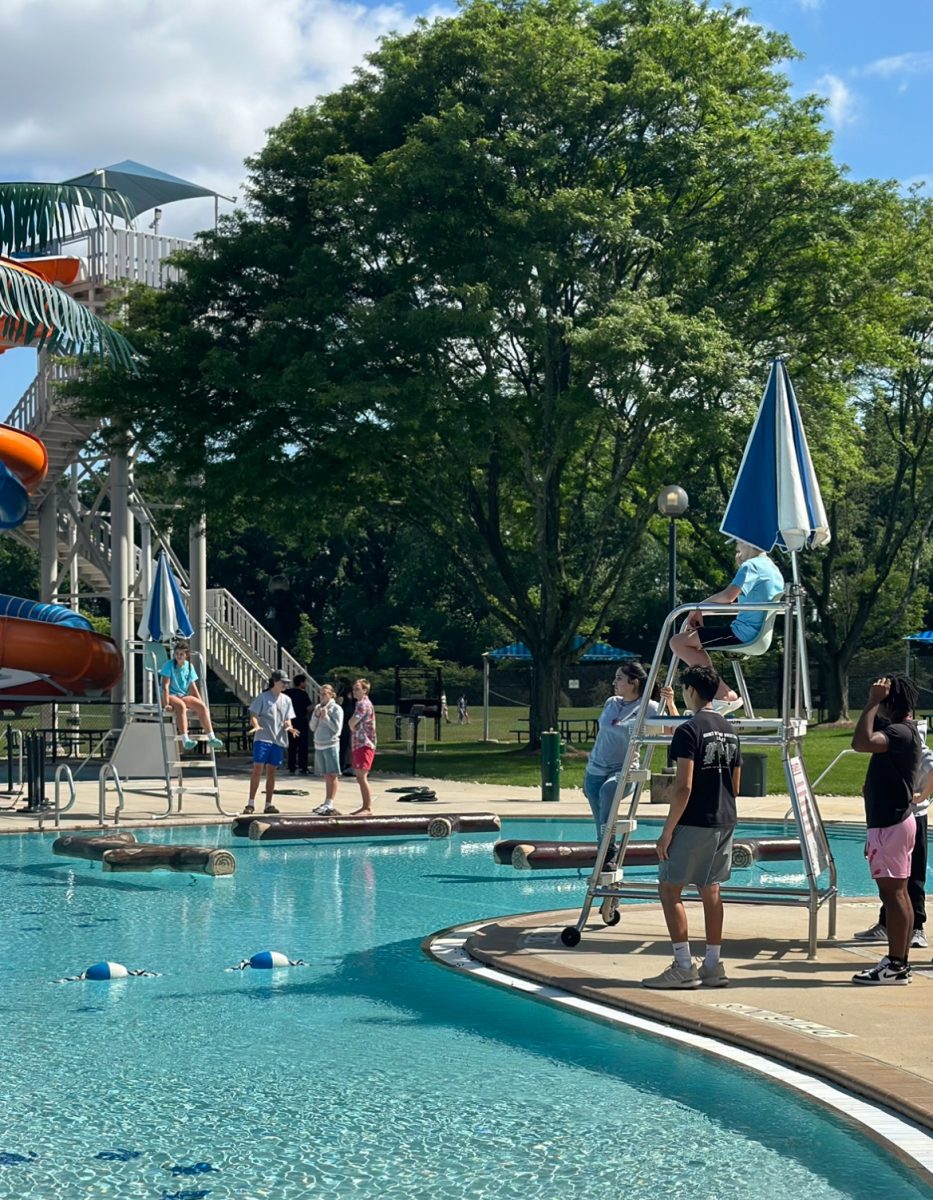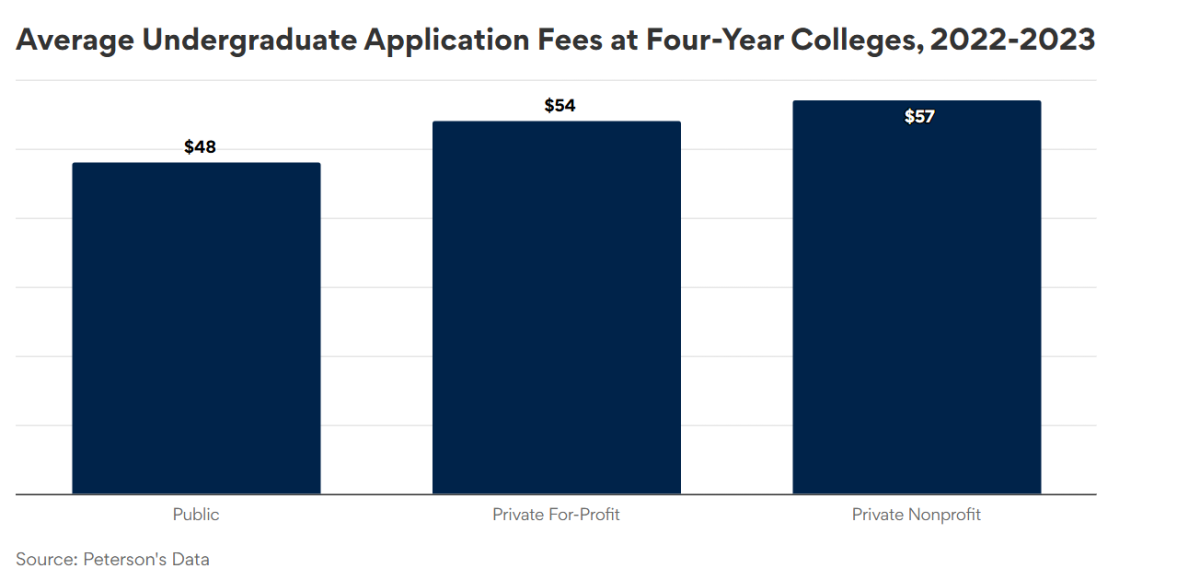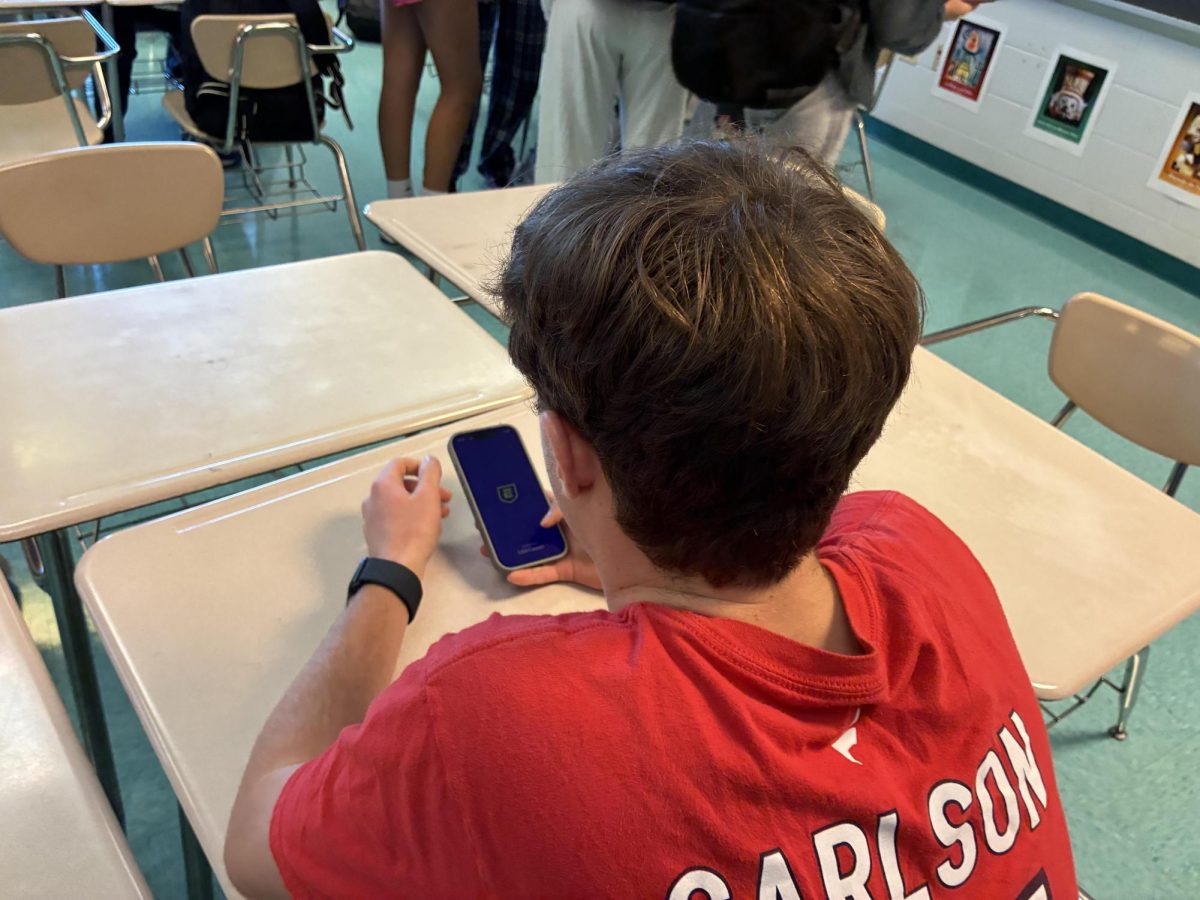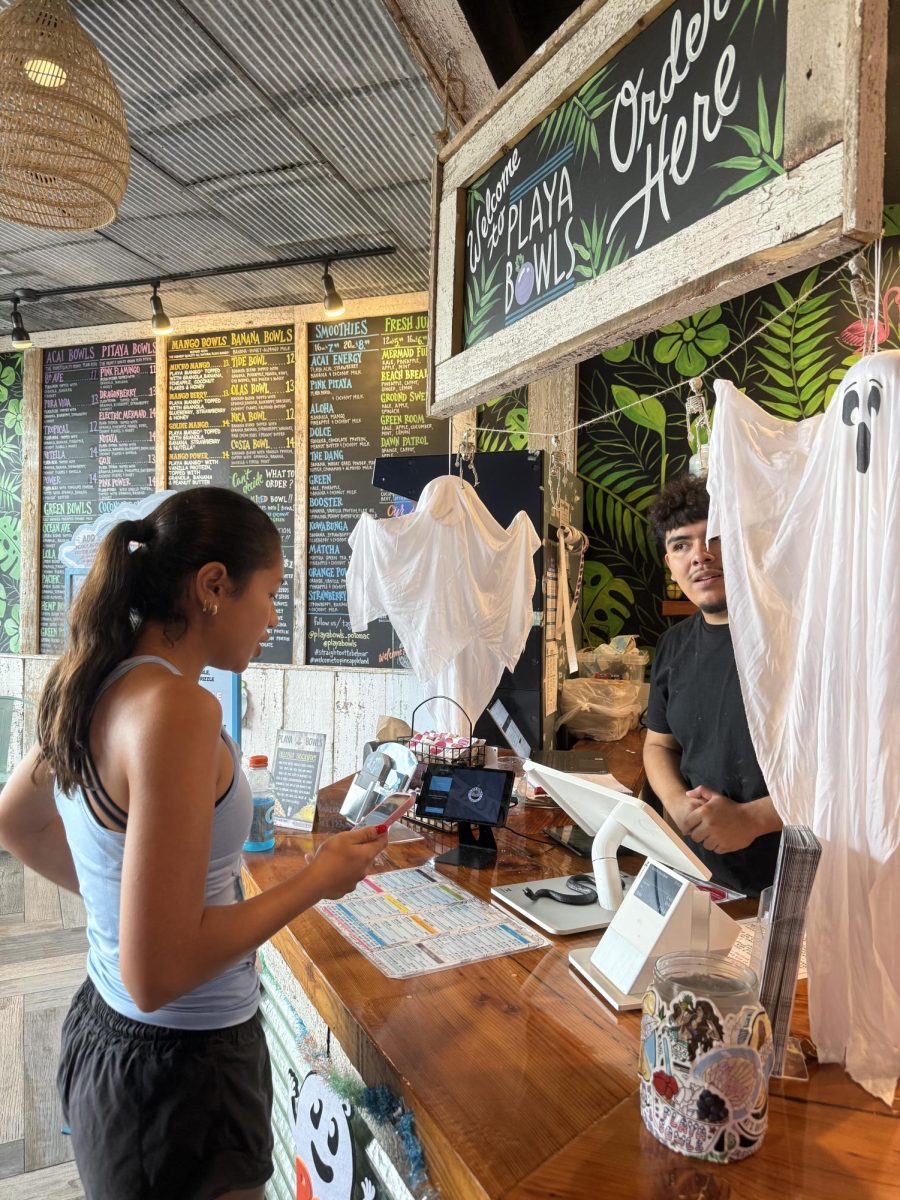$15 an hour. That is the minimum wage as of Jan. 1 in the state of Maryland. $15 is all an employee is required to be paid by the state; anything above that is considered a privilege. Whether out of necessity or just for more financial independence, students get jobs for real-world experience, developing professional relationships and training in news skills. However, with differing demands, salaries vary greatly among working high school students.
Junior Jake Cheng works on the Little Bennett golf course in Clarksburg. His duties include driving the golf cart onto the course, handing out snacks and cleaning the golf carts. “Fifty percent is hands-on work. The other 50% is working at the pro shop, which is for if you forget golf balls or tees or a hat, you can buy it there. But, the main manual part is collecting balls, cleaning carts, going on the golf cart into the driving range and contributing to the maintenance of the course,” Cheng said.
When accepting a position working at the golf course, Cheng negotiated an 18.75% raise from his original offer by using his prior golf experience as a member of the school’s varsity golf team and of the golf course. “I feel like I am financially compensated well for my work. I work part-time, four days a week for five hours each. Since I have so much knowledge and experience and I don’t need micromanaging, it was less work for them to train me. As a result, I feel like I’m one of the more valuable entry level employees,” Cheng said.
Junior Rebecca Gao works as a lifeguard and swim instructor for children at the Gaithersburg Aquatic Center year-round and at the City of Gaithersburg Water Park over the summer, making $17.50 an hour as a lifeguard, which Gao feels is a fair salary. “At first, I’d want to say that I’m overcompensated. To a patron, it looks like we’re just sitting on the chairs watching kids play tag. However, when an actual kid goes under and struggles to resurface, it’s my job to recognize that immediately and jump in. It actually happens more often than not, especially at the water park. It may definitely look like we’re being overcompensated when everyone is swimming safely and nobody’s drowning, but our pay steps in when we hear three whistles and are diving into the water to make a rescue,” Gao said.
However, Gao feels that her salary as a swim instructor, which is $18 an hour, does not reflect the difficulty of her job. “Teaching kids, especially the younger ones, is an incredibly draining task for me. At my swim center specifically, we hold lessons based on ability, but many parents overestimate their child’s ability and I find myself dealing with someone who’s never had water go above their shoulders in the same lesson as someone else who can swim the full length of a pool. The variability causes me to have to focus and, essentially, teach two different classes at the same time,” Gao said.
In order to become a licensed lifeguard, Gao had to complete the following assessment: swim 300 yards continuously, tread water for two minutes using only the legs, and complete a timed event within one minute and 40 seconds by starting in the water, swimming 20 yards, surface dive to a depth of seven to 10 feet to retrieve a 10-pound object, return to the surface and swim 20 yards on the back to return to the starting point and exit the water without using steps or a ladder.
Gao’s salary is similar to freshman Claire Weed. Weed works part time at Bruster’s Real Ice Cream, scooping ice cream, making milkshakes and cleaning counters. She currently makes $15 an hour, but over the summer, Weed will be working full time every day for six hours and will make $17 an hour, nearly what Gao makes lifeguarding. Unlike Gao’s job, which requires certification, Weed’s job had minimal qualifications. “I think I am paid very well because it is my first job so I have no prior experience working and I earn much more than most entry level jobs. Working at Brusters has also been lots of fun. It has taught me good communication skills, allowed me to build friendships and helps me practice good work ethic,” Weed said.
While she makes minimum wage in her current part time position, under the Maryland Labor and Employment Code, employees under 16 who are working less than 20 hours per week such as Weed are not entitled to Maryland minimum wage.
Junior Katherine Hua does administrative work for Solace Pain Management & Rehabilitation, working every Saturday for anywhere between two to three hours to seven hours a day. “Most of the time, I manage the database and do paperwork about the patients. This includes keeping track of which patients have paid, insurance claims and updating the database of patients. I’m also sometimes a receptionist for the clinic, so I have to check clients in, help them pay for their appointments, schedule appointments for them, and take calls,” Hua said.
Unlike juniors such as Cheng and Gao, Hua makes under minimum wage: $12.50 an hour. In the state of Maryland, minimum wage is $15.00 an hour for employers with 14 or fewer employees, and employees under the age of 18 can be paid 85% of state minimum wage, which is $12.75. Hua’s salary is legal under an exception in the law. According to the Maryland Labor and Employment Code, administrative and professional employees such as Hua are not entitled to Maryland minimum wage.
While Hua feels unfairly compensated, she appreciates the flexibility of her job. “I feel like I’m probably a little underpaid. On one hand, my regular tasks are pretty simple to do and my boss allows me to have a really flexible and sporadic schedule. However, sometimes I have to be a receptionist and work a full day, which is a lot more challenging and I get paid the same amount. Overall though, I’m OK with the arrangement because I can work whenever I want and I’m getting paid a legal amount,” Hua said.
Students at this school also work as tutors. For instance, junior Aanya Kapoor works at Kumon, an after-school learning center, every Saturday. Her job is to work with kids from kindergarten through eighth grade on both reading and math, helping them with Kumon worksheets and general homework. She makes $15 an hour. “Compared to what other jobs pay their workers, I think I am underpaid, especially considering that I had to be a good student with a good GPA to get hired. However, I really value the flexibility and low time commitment since I work once a week for approximately two hours,” Kapoor said.
One such job that pays more than Kapoor’s is senior Noah Parker’s job at Mathnasium, where he makes $18 an hour. Unlike Kapoor, who teaches both reading and math at Kumon, Parker’s job is focused on math, tutoring kids from kindergarten math all the way to AP Calculus AB. In addition to his job at Mathnasium, he tutors two students independently in geometry and in precalculus, making $40 an hour. “I feel like it’s pretty fair compensation considering that I find math pretty enjoyable and I’m getting paid to teach kids,” Parker said.
Making one of the highest hourly wages is junior Anna Lizondo as a babysitter. She works two to three days a week, babysitting for a family with three kids under the age of four. “For three kids, I make $20 an hour. At first, I thought I was charging too much because the parents are home when I babysit, but when I go babysit, I am responsible for three very small children that can not take care of themselves and it’s very demanding. I don’t have my phone out, I don’t really ever take breaks for two to three hours, all my attention and energy is focused on them. So I do think I am compensated fairly,” Lizondo said.








![Editors-in-Chief Ahmed Ibrahim, Helen Manolis, Cameron Cowen, Alex Grainger, Emory Scofield, Hayley Gottesman, Rebekah Buchman and Marley Hoffman create the first print magazine of the year during the October press days. “Only a quarter of the schools in MCPS have programs that are like ours, a thriving, robust program. That makes me really sad. This is not just good for [the student journalists] to be doing this, it’s good for the entire community. What [student journalists] provide to the community is a faith in journalism and that continues for their lifetimes," Starr said.](https://woottoncommonsense.com/wp-content/uploads/2025/10/wmpoFTZkCPiVA3YXA4tnGoSsZ4KmnKYBIfr18p3l-900x1200.jpg)